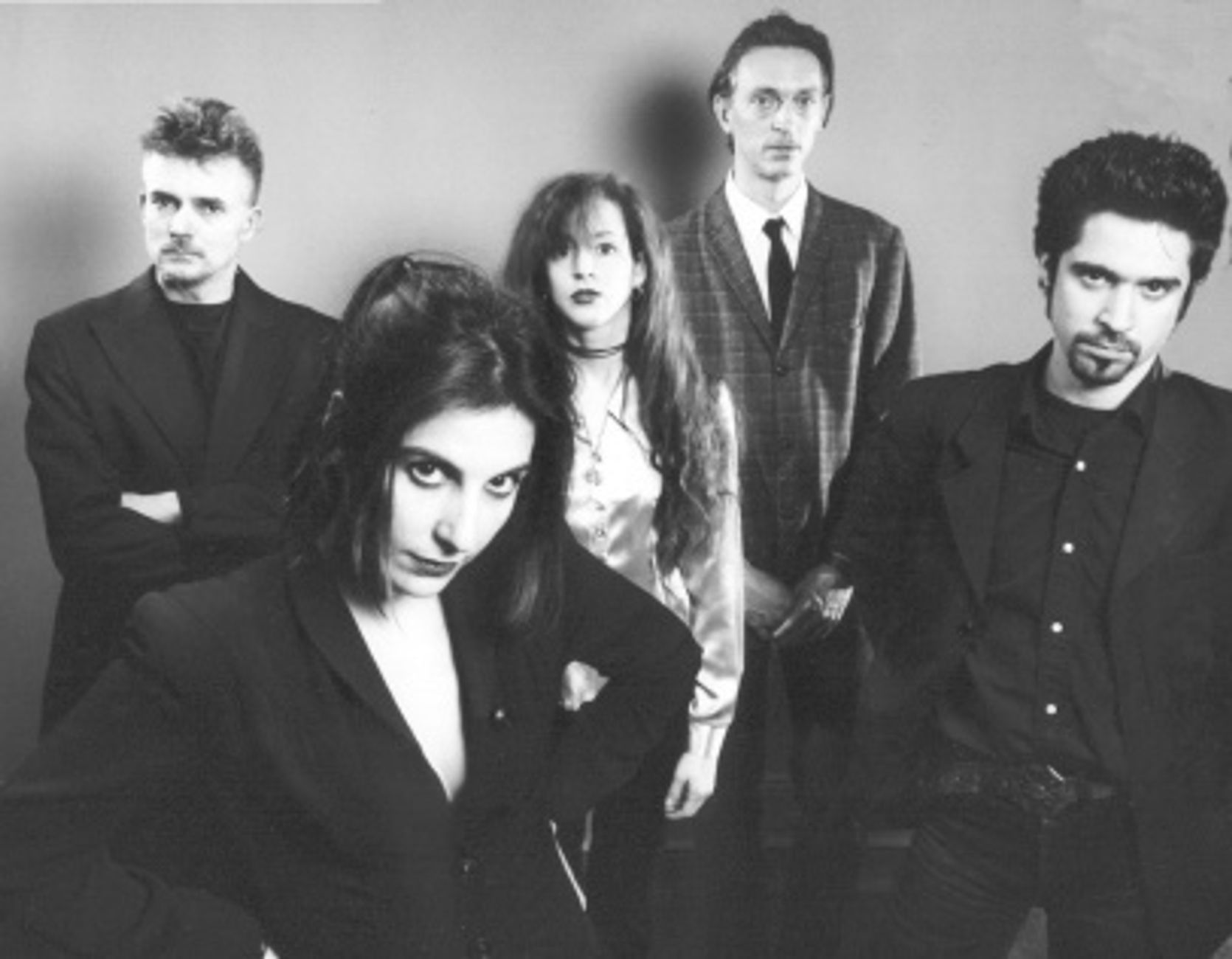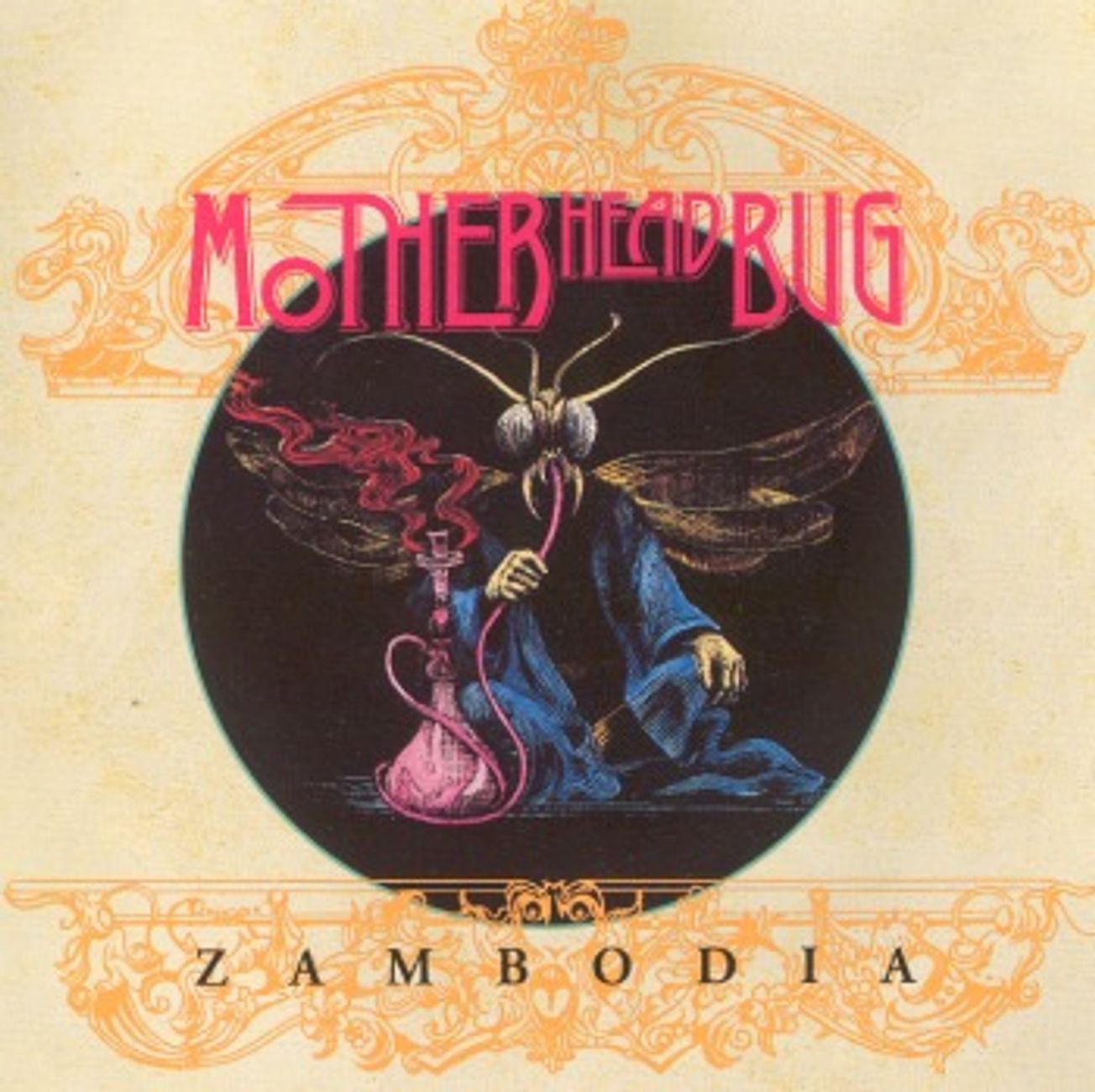
Sulfur
Artists
Once you get to know them, the first thing you realize about Parisian Michele Amar’s creation, Sulfur, is how mercurial this Lower East Side band is. By their own description, the band plays “mutant gypsy circus music.” Their debut full-length release, Delirium Tremens, is as riotously colorful as an Impressionist painting and as viciously cathartic as a script by Antonin Artaud. With eight members forming the core group on the disc, and many featured guest players, Sulfur has an incredibly wide spectrum of sounds at its disposal, including gypsy melodies, French musette music, Argentine tangos, Franco-German cabaret, American swing, Spanish flamenco, klezmer and Yiddish music, and 20th century European classical. And, somehow, like a thousand clowns, all this gets crammed under a storming, diabolical, hardcore big-top from hell. The size and scope of Delirium Tremens wholly fulfills the promise shown by earlier Sulfur demos that had tantalized listeners since the band’s creation in 1994. Equally mercurial is the combo’s line-up, which has been fluid throughout its history. Besides Michele Amar on vocals and keyboards, there is David Ouimet, trombone and keyboards; Paula Henderson, baritone sax; Mateo DeCosmos, drums; Norman Westberg, Guitar; Tony Corsano, percussion; and Nick Heathen, keyboards. Amar’s musical background began in Paris, where she studied at the Paris Conservatory of Music. While still a teenager, Amar moved to the port city of le Havre where she formed two bands: Declicks, a hardcore/punk band, and Les Ordures, who specialized in punk cabaret. In 1981 she coaxed some of her musicians to accompany her back to Paris. Although this precocious entrepreneurial phase provided Amar with the training-time to combine a tempestuous vocal style with a dementedly wicked stage presence, the Paris music scene proved frustrating. In 1985, she moved to New York and landed a job at a recording studio just as the MIDI/sampling revolution was transforming the industry. Soon Amar was a globe-trotting programmer/assistant engineer, working the console with pre-eminent bands in Switzerland (The Young Gods), the UK (That Petrol Emotion; New Order; The The), Germany (Celtic Frost) and Japan (Friccion). In 1990 Amar kept to New York, where she starting composing for film, including a score for the documentary Keith Haring: Drawing the Line. In 1991 she began releasing songs she had arranged and performed on MIDI under the “band” name, Virus. Once again, Amar was fronting her own material, which was now being drawn from a much deeper well of experience. Amar was also brought into the fold of the eclectic New York band Motherhead Bug. Onstage Amar played keyboard; offstage her technical expertise was put to work. When a Virus tape won a slot on a local record label’s compilation of New York band, the label called to say they had set up a gig for all the bands on the compilation. Thus, necessity became the mother of Virus. Among the rescuers drafted for the gig were Yuval Gabay from Soul Coughing, Adam Nodleman from Missing Foundation, and April Chung, who had worked John Zorn as well as her violinist role in Motherhead Bug. Following the band’s successful “arranged marriage”, Virus continued to gig, until they were informed that another band already had dibs on the name. Retitled as Sulfur, the band settled into its first stable roster, employing members familiar to fans of Foetus, Swans, Virus, and Motherhead Bug: Amar, Ouimet, Westberg, Corsano, and Heathen, plus Fiona Doherty on bass, Heather Paauwe on violin, and Dan Joeright on drums. Although an octet, this is merely the core line-up that plays on Delirium Tremens- the many guests include Gabay and Chung as well as Russian accordionist Yuri Kmizick; upright bassist Paul Nowindski, who has long gigged with Les Paul; and veteran trumpeter Jim Colarusso, whose remarkable career includes Elvis Presley, the Rascals and Silverfish. A telling feature of Sulfur is how it manages to sound cutting-edge and turn-of –the-century simultaneously. Sulfur draws much of its punch from industrial roots, but then cleverly deindustrializes the arrangements for acoustic instruments. It’s Amar’s continental style that defines the Sulfur sound. Her vocal is dazzling, but it’s a chilling and maniacal dazzle, burning like a bonfire on Walpurgisnicht. She holds nothing back, and snarls and hisses as if a pagan force of nature had stripped her of any artifice of etiquette. One of Delirium Tremen’s most vicious moments occurs in “The Ballad of Azalea”, in which a flower grows from the spit cast from a sailor after he drowns his fiancée. Throughout the record, Sulfur spins tales of the spitters and the spat upon. Despite the circus of suffering, Amar did not create Sulfur to be depressing for the listener. “I don’t think it’s about angst,” she says. “I think it’s despair. It’s a dead-end kind of thing where there’s nothing beyond this; there’s nothing afterward.” Belying the delirium and the despair, Amar guides Sulfur towards what seems an urgent poignancy. Despite a world that constantly crushes people towards a numb resignation, we are reminded that, if you can put hope in a song, then you still have hope. “Music is to celebrate life” Amar says. “One of my big influences is French musette, which emerged after the Second World War. This was the music played in the street. I’ve always been fascinated by people that perform in the street- who play their music just to celebrate, no matter what. Edith Piaf was a big incarnation of that. My grandmother used to play it a lot. It was the music of after the war- meaning that a lot of people were dead- and they were like, ‘what do we do now? So they were celebrating life, but there was still a lot of sadness- and there’s that sadness in a lot of the music that I love, like the blues, and gypsy music, and Jewish music. It’s expressing renewal.” - From SOUND VIEWS by Matt Keating

M O T H E R H E A D B U G
Artists Form to you in the 1989 from David Ouimet (collaborating of Foetus, Firewater, Copa shoot Cup ) the pianista and trombonista, and graveli singer. The Motherhead Bug are of fact an orchestra that executes sonorous columns for imaginary films: Ouimet thinks the history, “translates” in sounds and directs the orchestra. they serve to create a sound that is how much more bizzarro the folk has perhaps expressed in their period. Their tradition “cabaret” approach between sad and the allegro, from the bands of the Army of the Salvation and from the cabaret of years '20, the joke and the funeral praise. Music hall and the cardboards animated (not to mention the marching bugs of Sunday and the choruses of the elementary asylums). Their formation very comprised in fact eight elements to which occasional hosts joined of time in time. Use the past because the Motherhead Bug does not exist more. Open our curtain to single the Raised By Insects/Bugview (Lungcast)1991 and single the Age Of Dwarfs/Bleating Heart Incident of 1992. The gems of Zambodia, the album of debut of 1993, Sword fishTrombone to Gilbert & Sullivan, “Zambodia” is their only testimony in annals rock, was melted in fact endured after the publication of the album. The sonorous arsenal that they were carried behind was worthy of the marching bands Americans. The tribali percussions of it begin them “My Sweet Milstar” spread a perfect carpet for the fairs to fanfare of the breaths. The atmosphere is nearly from Music Hall luciferosious, a dramatic and “deeply folkloristichei” baccanale. The course of the trail is not never linear, the gag they are always in ambush, and is for that even if some times touch the six minutes, never is not bored to us, indeed. The longer trance as an example, “Demon Erections” stirs with great emotional tearing a topic of violino with the infernal step of polka of the end, where the instruments prevail enthusiastic to full lungs. A pair of worthy numbers of the Viennese cabaret is made ahead, trumpets and trombones, of blow it is found again to us Poe or Pogues between the Klezmer of the east Europe with “Pinola”, bizzarro a popular ballet, from fair of the same country, with a lot of chorus from tavern. Most delicious it is also the song that it to the album gives to the title, Gitane rhythm and bugles from duel western are alternated to growing of arch in order then to end together in a orgia sonorous that seems the storied column of our hero in more animated cardboards. And what to say of the possessed person Waltzer of “Shabooba”? Here we are indeed in the territory of Automata Motorlesso (with greater class but). Ouimet backs to that sliding brass or to sing, wrapped of coils of a romantico violino. CD Music example of energy “folk” to the pure state “Zambodia” represents one of the happier episodes sure and originates them of years '90. Tony Lee to the Bass ( collaborating of Rail RoadJerk ) Michele Amar (collaborating of Sulfur ) to the board of keys, Jim Colarusso to the bugles, April Chung to the violini, Julia Kent (Collaborating of Antony and the Johnstons and the Rasputina )to the violoncello, Ben Plummer to the sax-sassofoni, Steve Ovenden to the percussions, Steve Mc Millan to the guitars, Tomoyo to the pianoforte, Cyril Mazard to the Low Drum, compose the skeleton of this ensemble from room, protagonist of some of the brutal incursions of the last years in the heart of music folk. -translated from the Zambodian press release.